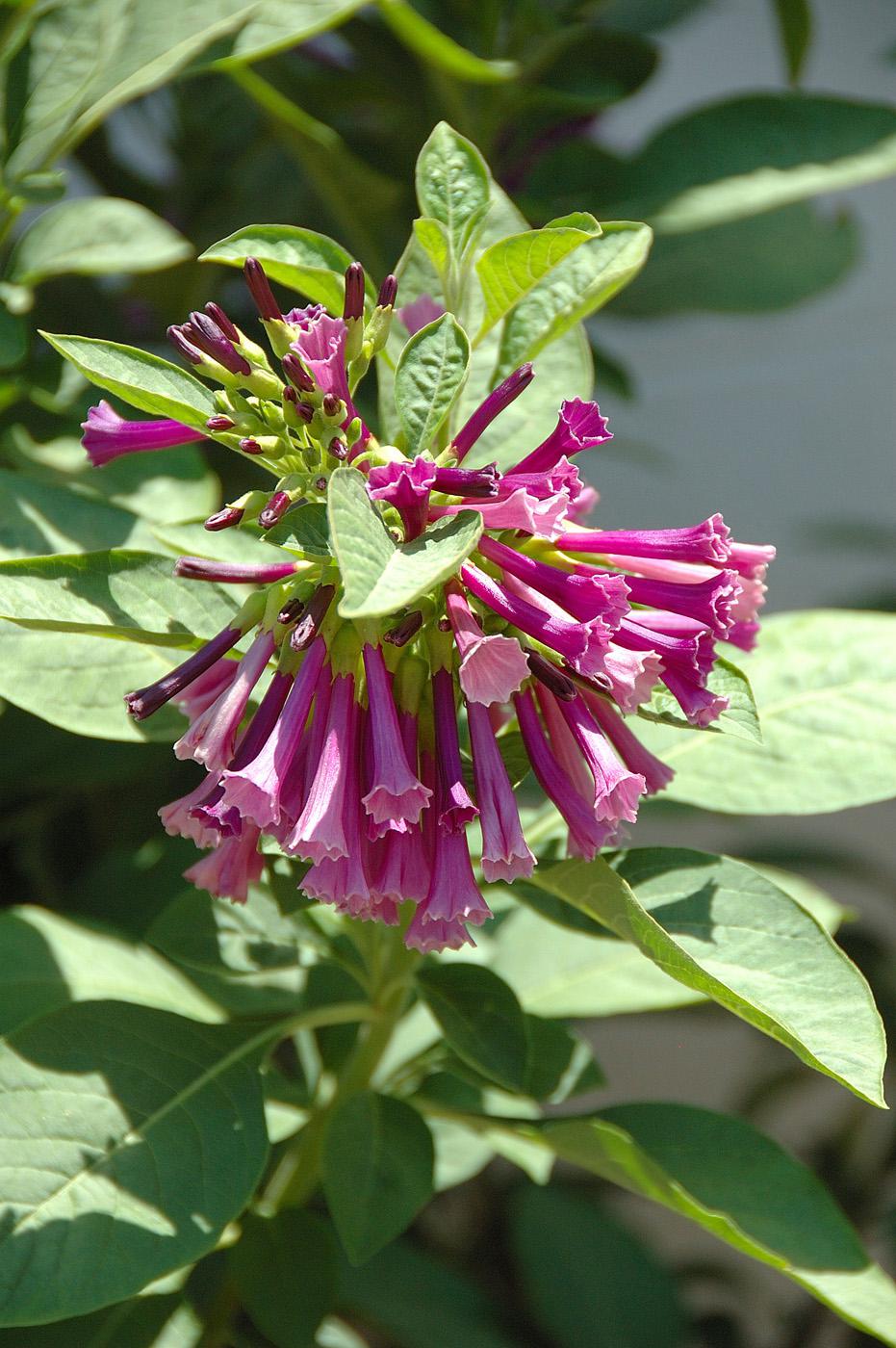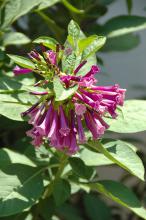Information Possibly Outdated
The information presented on this page was originally released on July 23, 2009. It may not be outdated, but please search our site for more current information. If you plan to quote or reference this information in a publication, please check with the Extension specialist or author before proceeding.
Hummingbirds, gardeners love Royal Purple Queen
By Norman Winter
MSU Horticulturist
Central Mississippi Research & Extension Center
If you love hummingbirds, then let the Royal Purple Queen reign in your garden.
Many people have a renewed passion to create a “backyard wildlife habitat,” and I am regularly asked if certain plants will attract hummingbirds. While natives are naturals in this setting, there are some stalwart performers from other countries that make it fun to garden. One such plant is the Royal Purple Queen.
Botanically speaking, Royal Purple Queen is Iochroma cyaneum, a name only few are familiar with. The plant’s popularity is being driven by the Athens Select program, courtesy of the University of Georgia. Iochroma has been around, but mostly through specialty catalogs or at homes of tropical plant nuts and those who obsessively search out hummingbird plants.
Though you might not know the name, you will recognize the Solanaceae family. That’s right -- this striking plant is in the family with tomatoes, peppers and brugmansia, or angel trumpet. The Royal Purple Queen is similar to the angle trumpet, and a lot of information refers to it as a mini angel trumpet.
Royal Purple Queen is a large plant that develops a shrub-like appearance. It can reach 3 feet with a single bound, and I have seen some closer to 5 feet. In mild climates, it may hit 8 feet tall. It is also fairly wide, reaching 24 to 48 inches.
It comes to us from western South America. The leaves are large and velvety, giving a slight gray appearance, but it is the flowers that dazzle. Royal Purple Queen produces clusters of 3- to 4-inch-long, dark purple flowers all summer. There may be 20 to 30 flowers in a cluster.
Royal Purple Queen was sold at our Mississippi Garden and Patio Shows this year and quickly disappeared off the shelves. When you find yours, select a site with fertile, well-drained soil in full sun. Athens Select is touting them as being perennial in zones 7 and higher. This means that in our area, they will die to the ground in the winter and return like angel’s trumpet.
The Royal Purple Queen also makes a nice tub or container planting, but keep it in full sun so it will look its best. In the landscape, it will look incredible planted in a tropical partnership with bananas, cannas like the Bengal Tiger and the old-fashioned candlestick plant with its yellow, candelabra-like blossoms.
In the perennial garden, use it much like you would the blue anise sage or Salvia guaranitica, another outstanding hummingbird plant. The purple flowers scream to be grown close to yellow. The Mayan Gold tecoma or esperanza are great choices, as are some of the new yellow zinnias like Zahara Yellow or Profusion Yellow, which is coming out in 2010. For the fall hummingbird garden, partner them with the forsythia sage Salvia madrensis, which has long spikes of yellow flowers.
The Royal Queen Purple appreciates a little fertilizer. Feed landscape plantings monthly with a slow-release, balanced fertilizer. Feed those in containers every two weeks because more frequent watering leaches nutrients.
If at any time you feel like it needs a little pruning to maintain its shapeliness, feel free to cut away, but it is not mandatory. Do be sure to go into winter with a good layer of mulch.
I hope Royal Purple Queen will go mainstream and become a part of everyone’s gardens. It is loaded with landscape possibilities and will make you thrilled you included it in yours.



